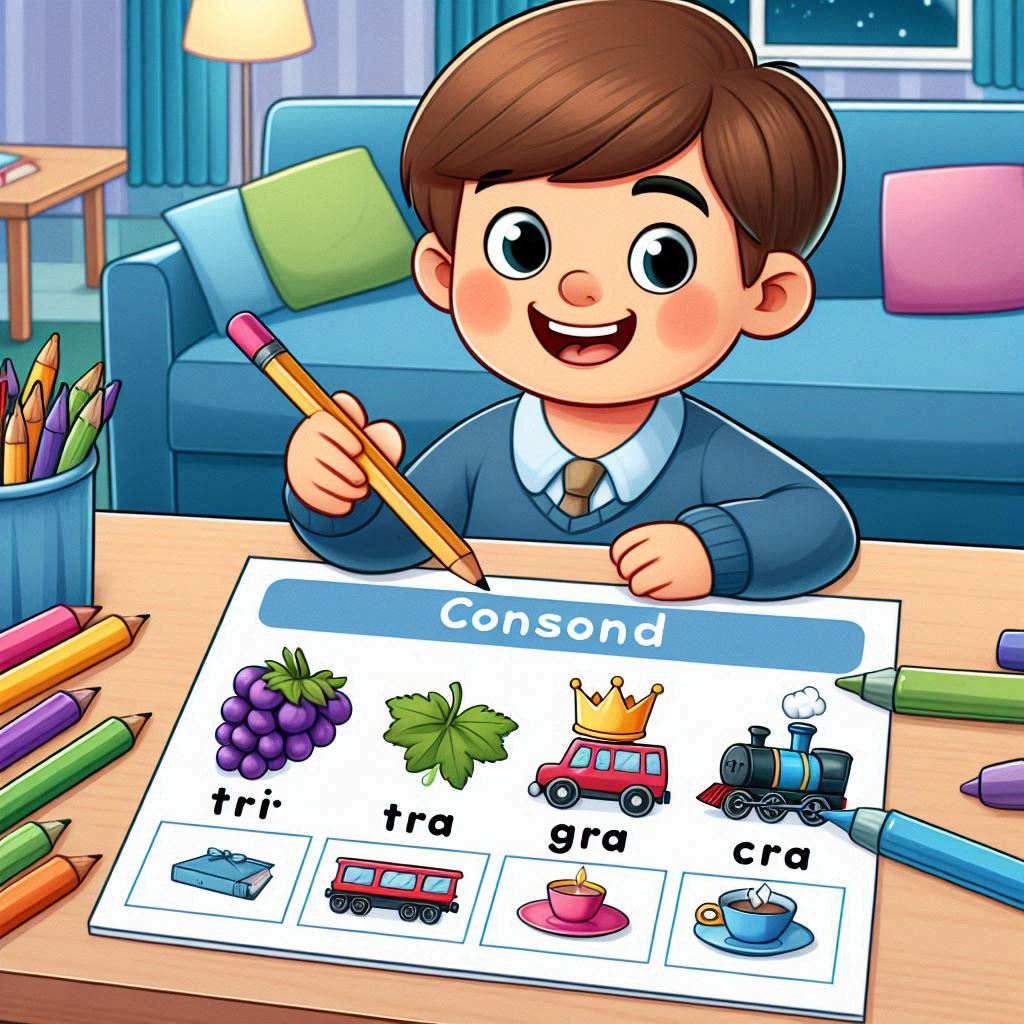Consonant Blends Worksheet

Introduction to Consonant Blends
Consonant blends are groups of two or more consonants where each sound is heard. Learning these blends is an important part of phonics and early reading development. A Consonant Blends Worksheet helps children practice recognizing and using blends like bl, cr, fl, and st. These worksheets support young readers in identifying the individual sounds in blends and developing stronger pronunciation, spelling, and decoding skills.
What is a Consonant Blends Worksheet?
This worksheet is a phonics-based activity that focuses on teaching children how to identify and use consonant blends. It may include matching pictures with blend words, filling in the missing blends, or choosing the correct word that starts with a specific blend. For example, a child might match a picture of a frog with the word "frog" or fill in the missing blend in "__ag" with "fl" to form "flag". These exercises are designed to build awareness of how consonant sounds work together.
Benefits of Consonant Blends Worksheets
Here are some of the key educational benefits of using consonant blends worksheets:
- Improves Phonemic Awareness: Children learn to hear and distinguish between combined consonant sounds.
- Strengthens Reading Fluency: By mastering blends, children can read words more smoothly and confidently.
- Enhances Spelling Accuracy: Recognizing blends helps children spell words correctly by understanding how letter combinations work.
- Builds Vocabulary: Children are exposed to many new words that include blends, expanding their language and comprehension.
- Encourages Word Formation: Kids begin to understand how new words are formed by combining sounds, which supports creative language use.
How to Use the Consonant Blends Worksheet
Here’s how to get the most out of a consonant blends worksheet:
Step 1: Introduce Common Blends
Start by introducing blends such as bl, cl, fl, sl, br, cr, dr, fr, gr, tr, sk, sl, sp, st. Say the blends out loud and write examples on a board or paper.
Step 2: Provide the Worksheet
Distribute a worksheet that includes blend-matching exercises, missing blend fill-ins, or image-to-word matching. Worksheets that include colorful pictures are especially engaging for young learners.
Step 3: Demonstrate the First Example
Walk the child through the first question. For example, say, "This is a picture of a drum. What letters do you hear at the beginning? Yes, 'dr'. Let’s write that in the blank."
Step 4: Let the Child Try Independently
Allow the child to complete the worksheet independently or with minimal help. Encourage them to say the word out loud and listen for the blend sounds.
Step 5: Review and Reinforce
After the worksheet is complete, go over each answer together. Correct any mistakes and provide additional examples using the same blends.
Creative Variations of the Worksheet
- Picture Match: Children match pictures to the correct blend words.
- Blend Sorting: Create a cut-and-paste activity where children sort words into categories based on their beginning blends.
- Blend Bingo: Use a game format where children mark off words containing a certain blend.
- Blending Story Time: Have children create short sentences or stories using a list of blend words.
Examples of Consonant Blend Words
- bl: Blue, Black, Blend
- cr: Crab, Crack, Cry
- fl: Flag, Flip, Flower
- dr: Drum, Drop, Dress
- sp: Spin, Spoon, Spill
- st: Stop, Star, Stick
Why Consonant Blends Matter
Consonant blends are an important building block in phonics instruction. They help children understand how individual sounds come together to form new sounds. Recognizing blends not only improves reading fluency but also aids in spelling and pronunciation. Children who are confident in blending sounds are better equipped to decode new words and become more proficient readers.
Conclusion
The Consonant Blends Worksheet is a powerful tool to support early literacy. With a combination of listening, reading, and writing tasks, these worksheets help children develop essential phonics skills in an enjoyable way. By practicing blends, children gain the confidence they need to read fluently, spell accurately, and explore language more creatively.